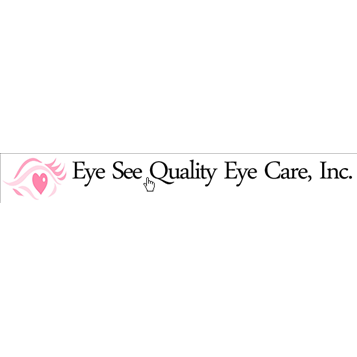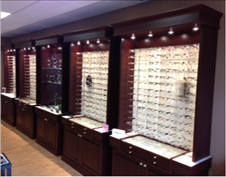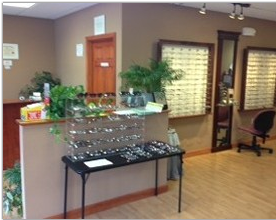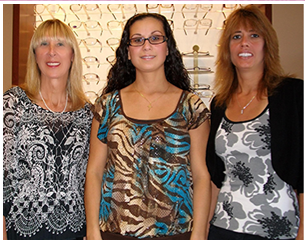Did you know that the human eye can process more than 10 million color hues, including over 500 shades of grey? Don’t miss out on the wonderful world of color with bad eyesight.
In 1968, divers recovered 20 wooden boxes from the sunken 1583 Venetian merchant ship, Gagiana. Each box contained a dozen 16th century spectacles featuring handcrafted leather frames that were most likely crafted in Nuremburg, Germany.
No, your eyes have not gotten worse in the week since you bought your new glasses – the lenses need to be cleaned. We recommend keeping soft cloths designed specifically for cleaning lenses in several places – your desk, glove compartment, purse, and briefcase to name a few.
If you regularly move from indoors to outdoors, transition lenses can help remove the need for multiple sets of glasses to protect your eyes. Photochromic lenses darken or lighten based on the amount of sunlight or UV radiation striking their surface.
For a long time, people with a strong prescription had no choice but to wear extremely thick “coke bottle” lenses, but not anymore. Modern glasses can use high index plastic lenses, which gives you the same strong prescription while being much lighter and thinner.
Cleaning a pair of glasses with one’s shirt is not recommended. Clothing often contains dirt or oils that aren’t necessarily visible, and can actually make lenses even dirtier than they were before.
Think all eyeglass cases work the same? Think again! Using a soft case or one that's too small for your frames can cause as much damage as leaving them unprotected.
The lens inside the eye continues to grow throughout life. In an average life span, your eyes will see approximately 24 million images of the world around you, and contribute 85 percent towards your total knowledge.
Want to highlight and outline your eyes with your glasses? Then black frames are going to be your best bet. If you’re really looking to make a statement, choose glasses that contrast the tone of your face and your hair.
Farsightedness, or hyperopia, is the ability to see objects at a distance clearly, while being unable to focus on objects that are close, like books or computer screens. Many screenings don’t look for hyperopia, so a visit to the optician is a must.
An eye examination is a very simple procedure that may only last around 30 minutes. In addition to testing your vision, you will also be checked for any early signs of cataracts, glaucoma, and other conditions that can be revealed through the eyes.
The nose pads on your eyeglass frames aren't just designed to make your glasses comfortable; they're to help keep them in place. If you feel your frames slipping, tightening the nose pad screws may help.
Benjamin Franklin suffered from myopia and presbyopia, two conditions that required different pairs of corrective eyeglasses. To avoid having to switch glasses all the time, in 1784 he invented bifocal lenses that helped with both of his eye conditions.
Do you get a glare from lights when you drive with your glasses at night? This can be caused by reflections on the glass of the lens. To help combat this, you can get glasses with an anti-reflective coating to help lessen the glare.
If you participate in sports, you need glasses that can withstand the forces that are generated. While you may use a strap to keep them affixed to your head, they still need to be sturdy enough to resist damage if they are knocked off your face. Talk to us about frames designed for sports.
When cleaning your eyeglasses, never use chemicals not specifically designed for lenses. Rather, opt for a specially made eyeglass spray or liquid cleaner, or simply use warm water and a little dishwashing liquid.
The increased demand for eyeglasses in the 16th and 17th centuries coincided with the rising popularity of books and other reading materials. Reading became so publicly accessible that eyeglasses were sold on the streets near newspaper stands.
It's hard to imagine a pair of glasses without molded temple pieces, but they weren't always a standard feature. The earliest frame temples were pieces of string or ribbon that hooked around a wearer's ears!
What percent of people across the country wear glasses? If you guessed 64 percent, you're right. Around 11 percent of people who need vision correction prefer contact lenses to conventional glasses.
Having an oval face can often mean you have the most choice of frames that will look good on your face. For best results, stick to frame colors that complement your skin tone.
Did you know that Thomas Jefferson amassed a huge eyeglass collection while he was President? For special occasions, Jefferson personally requested new frames, often with hand-drawn diagrams.
Ready for a stylish new look? Adding some new frames to your collection, or updating glasses you already have, is a great way to add some style to your life. New frames are being released constantly!
While some glasses cases may be bulky, sleek cases are available. Microfiber pouches are also on the market to protect glasses that aren’t worn all the time, such as reading glasses, from damage.
Did you know that when babies younger than three months cry, they do not produce tears! Stranger still, in the first hours after a baby is born, he or she perceives the world upside-down. This is because their brand-new eyes project inverted images onto their newborn retinas!
Did you know that you should schedule routine eye exams on a yearly basis? Not only can your prescription change over time, but regular exams help ensure that your eyes stay healthy and disease-free.
Traditional eyeglass frames are made with classic shaped oval or round lens frames, and are typically offered in neutral colors such as grey or black.
In addition to having regular eye tests, you can help keep your eyes healthy by eating plenty of fruit and vegetables. Exercise is important too, as good circulation and oxygen intake are also vital for the health of your eyes.









